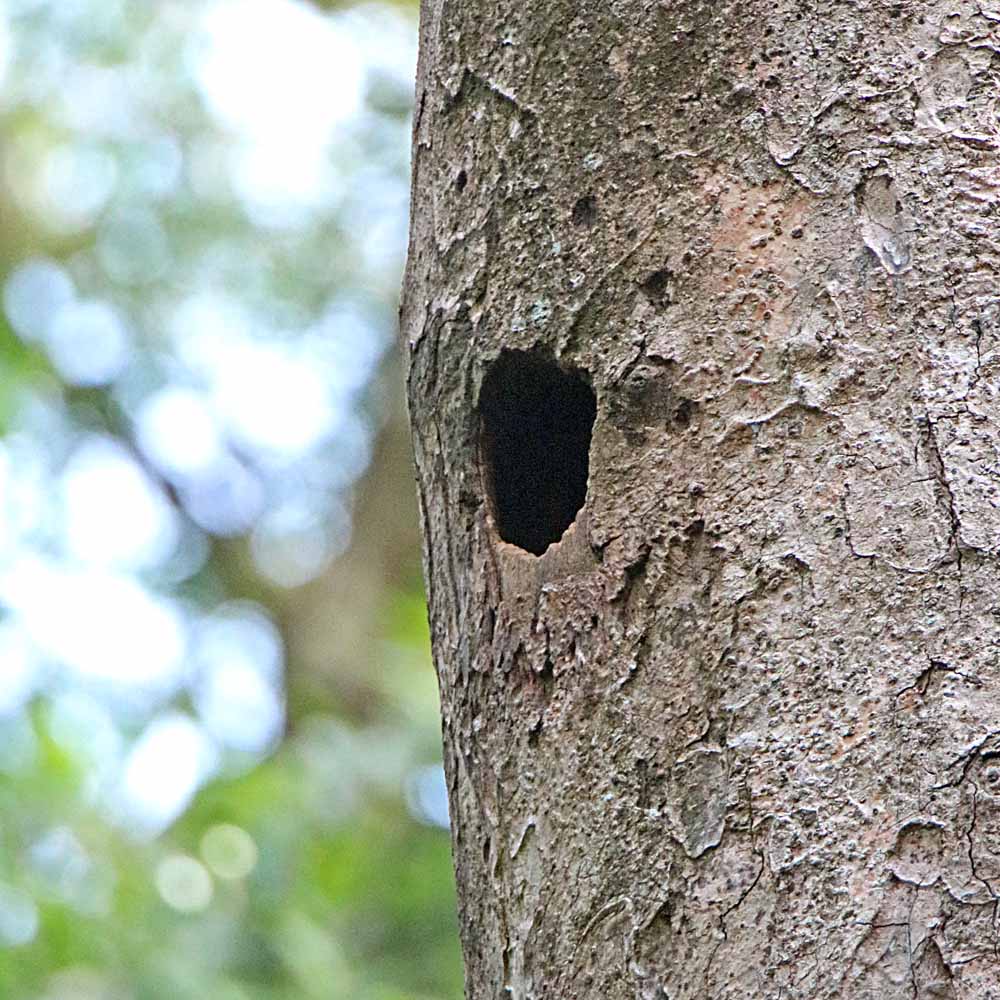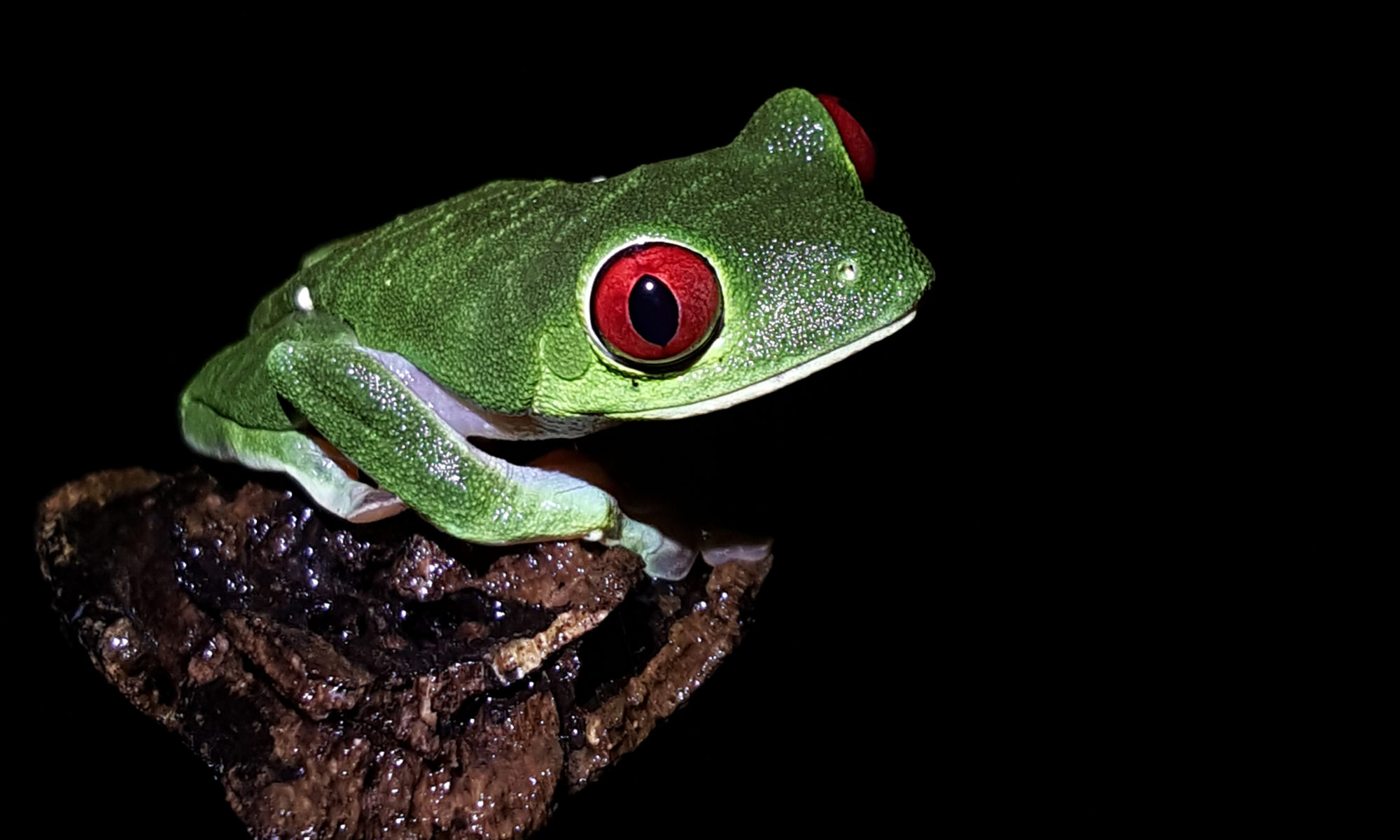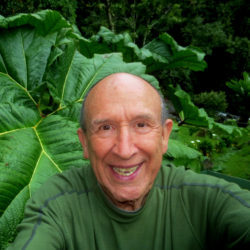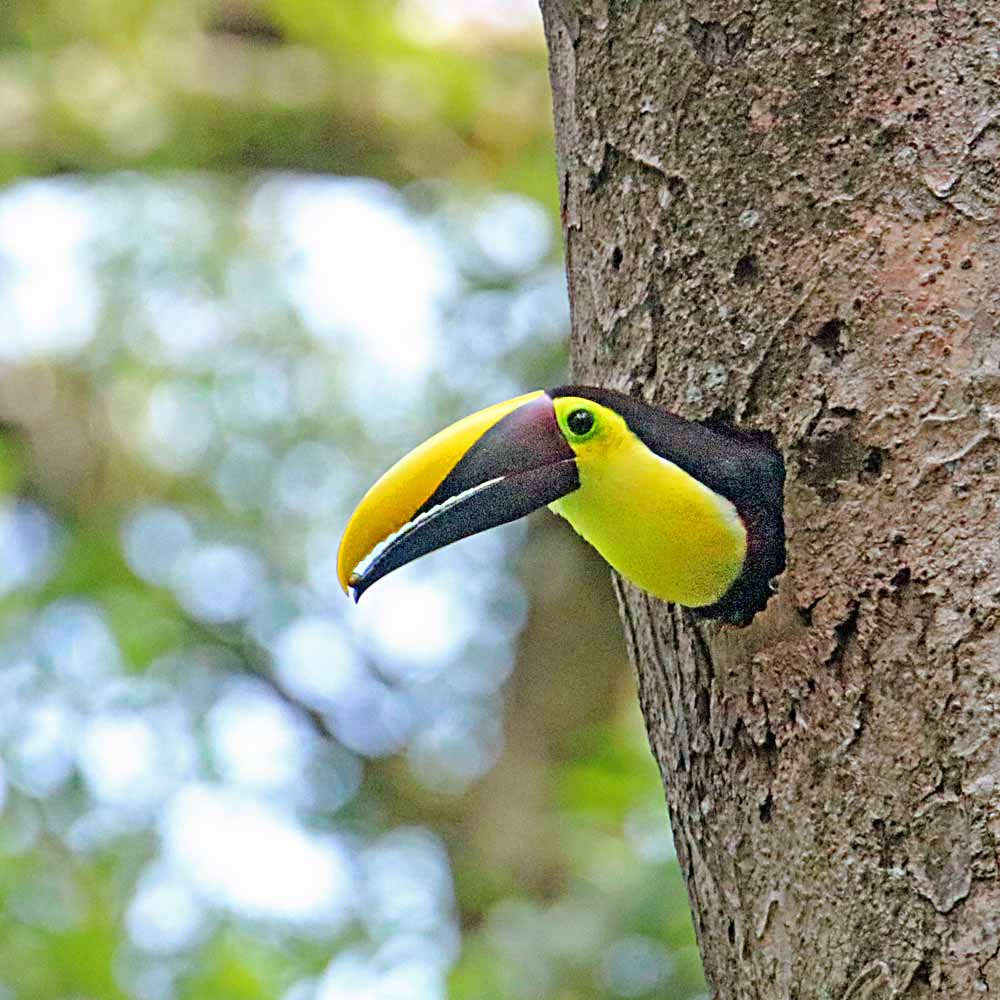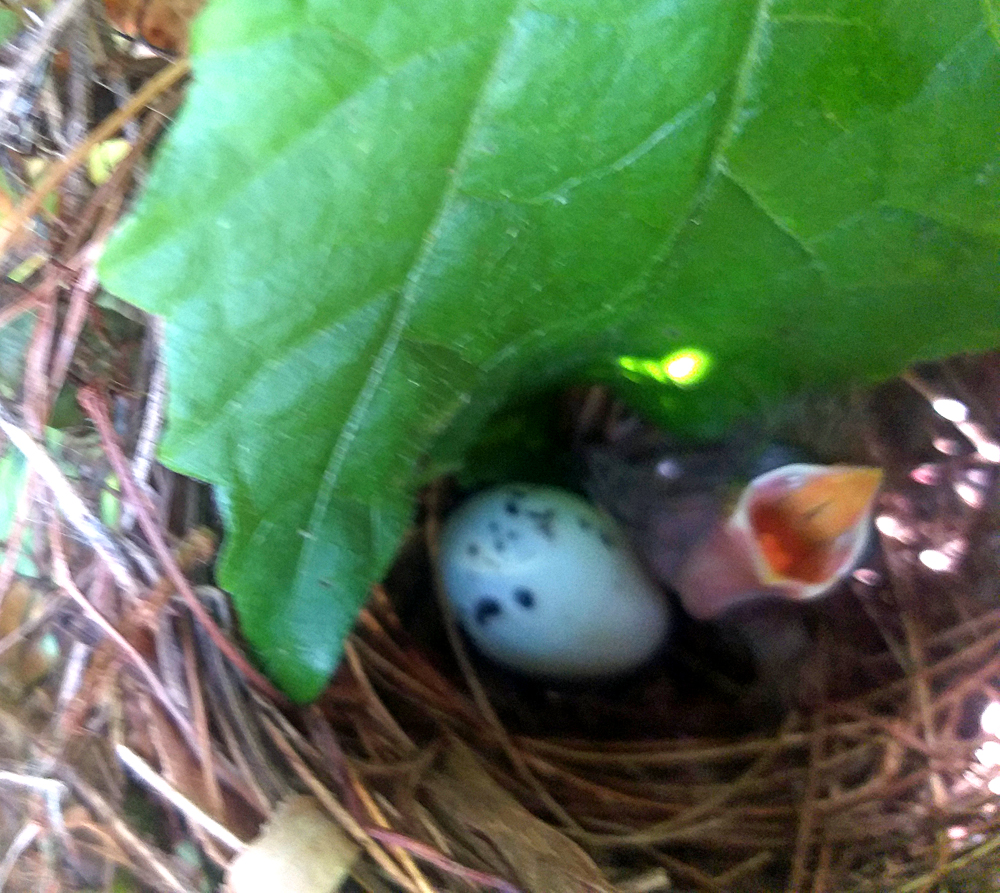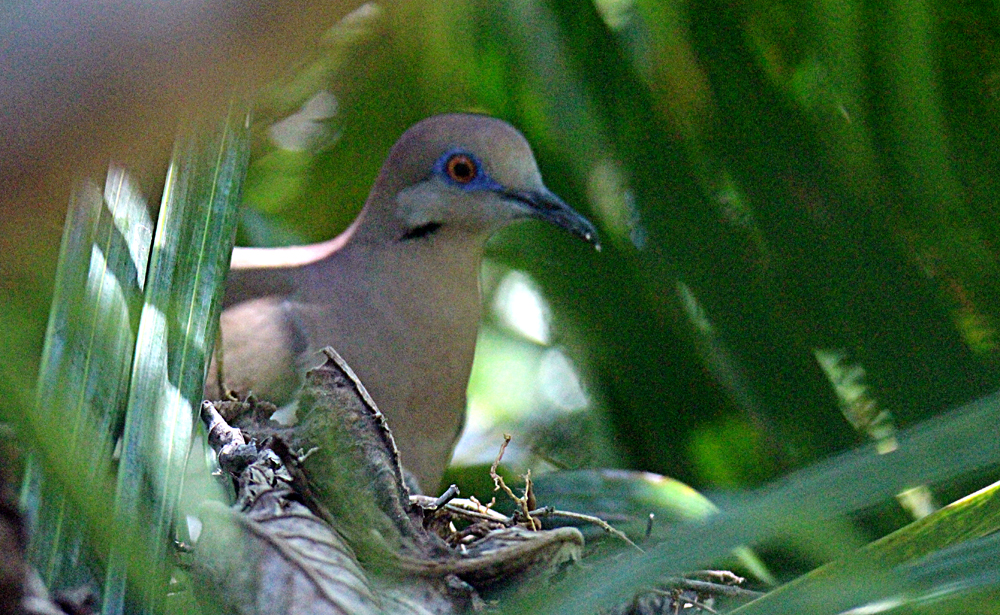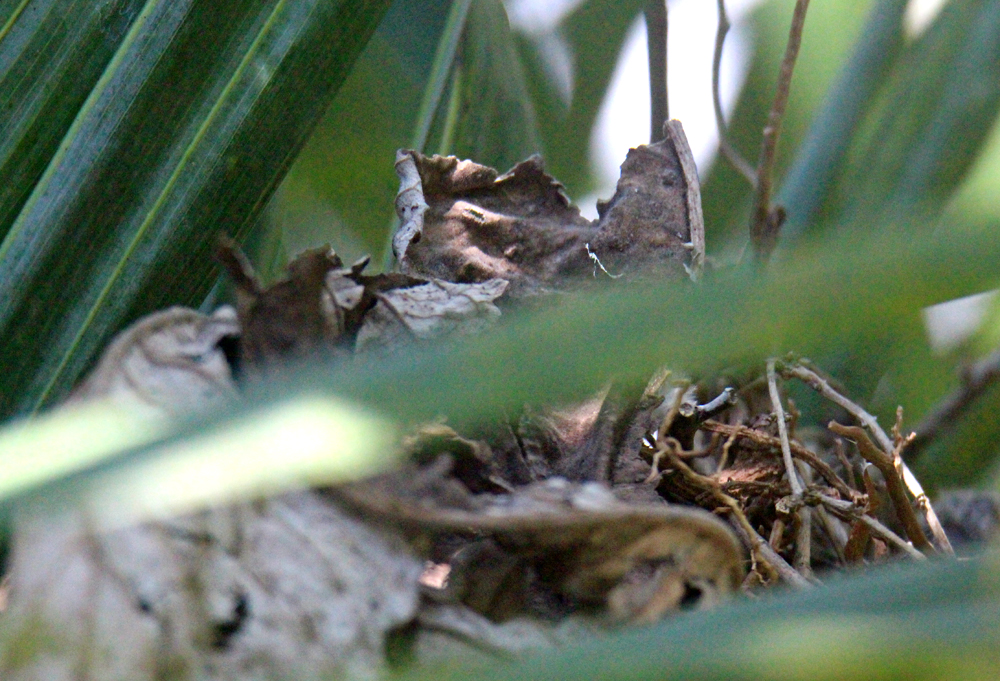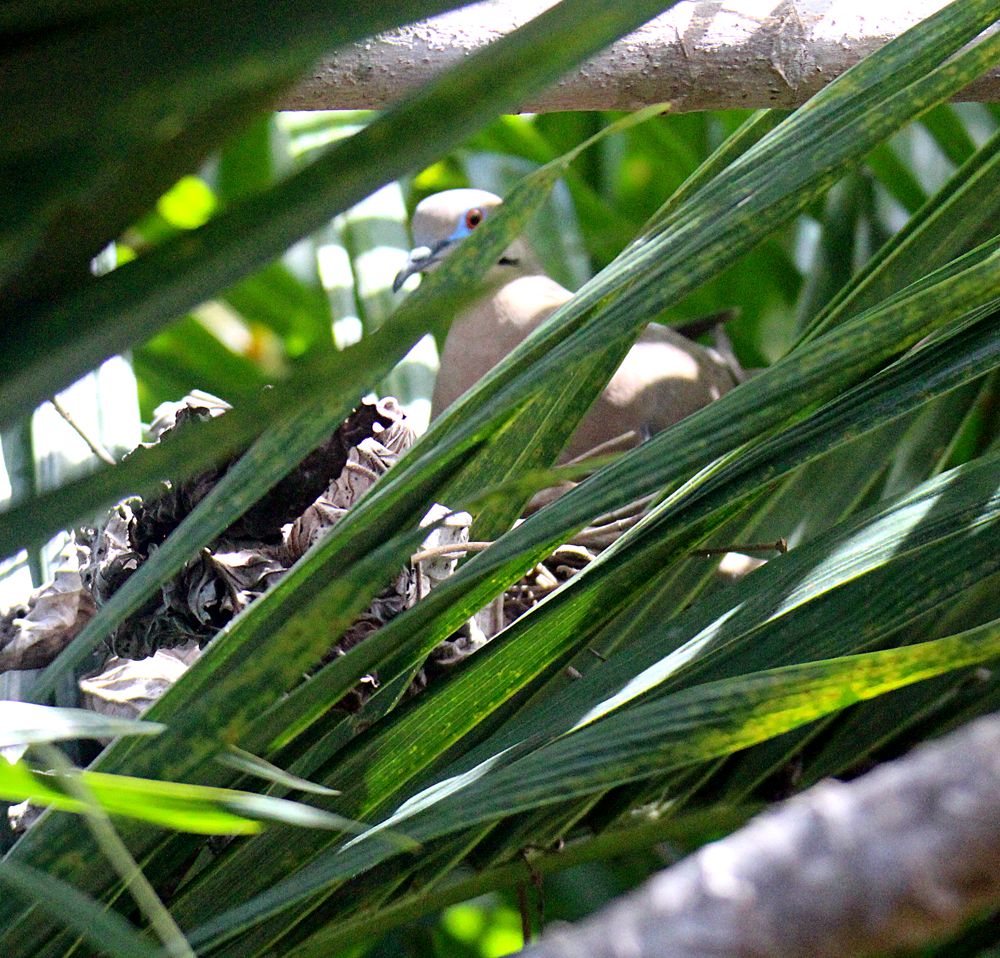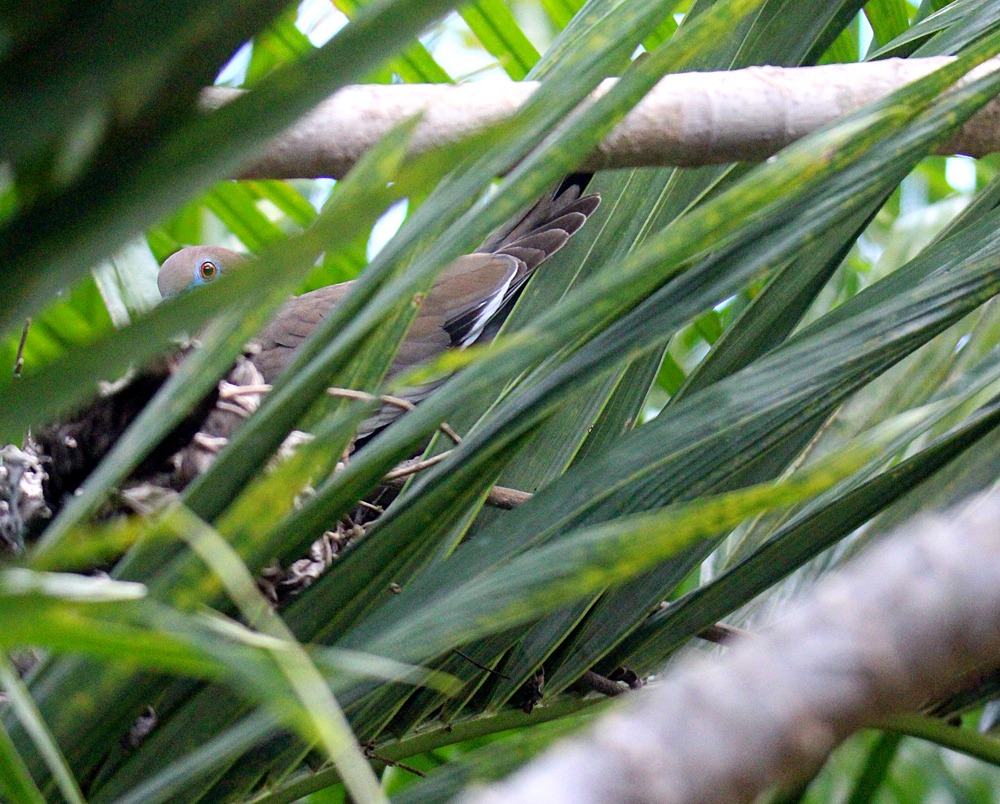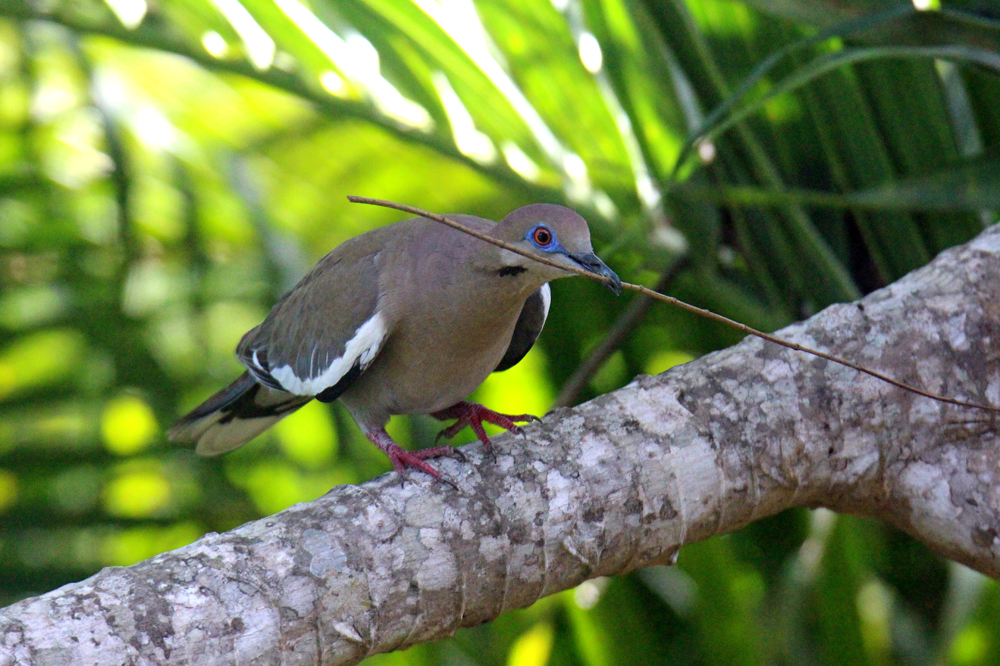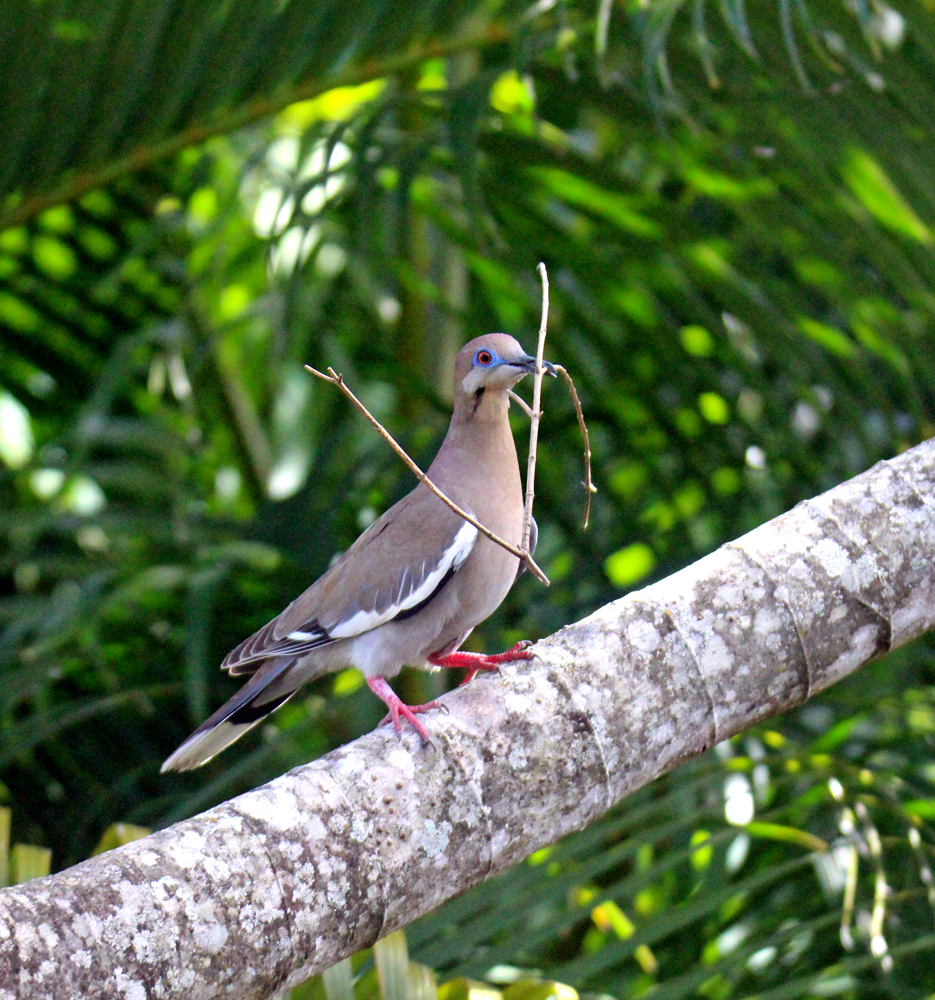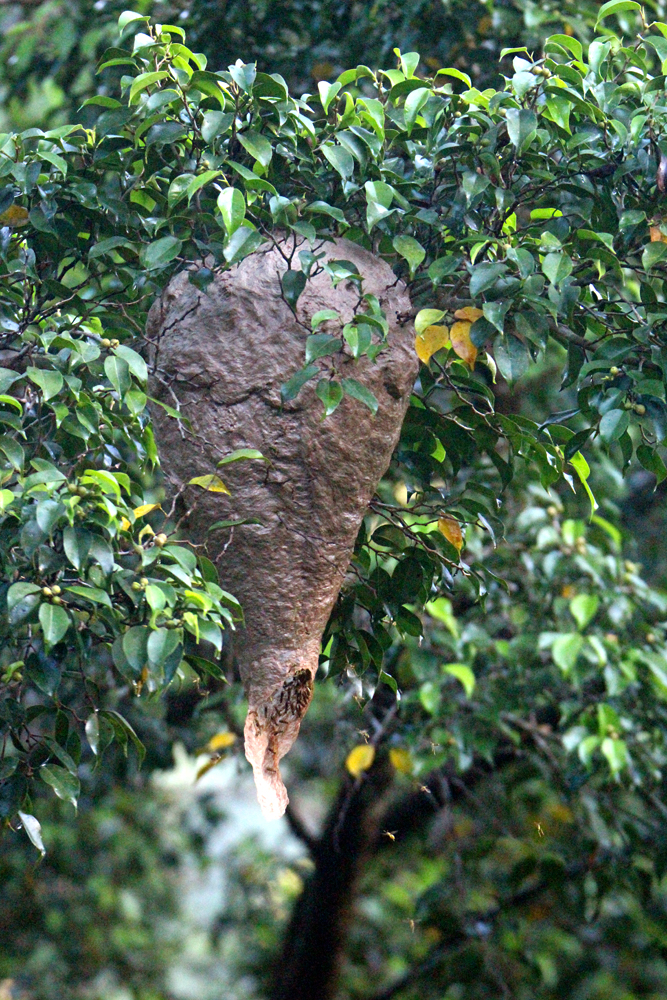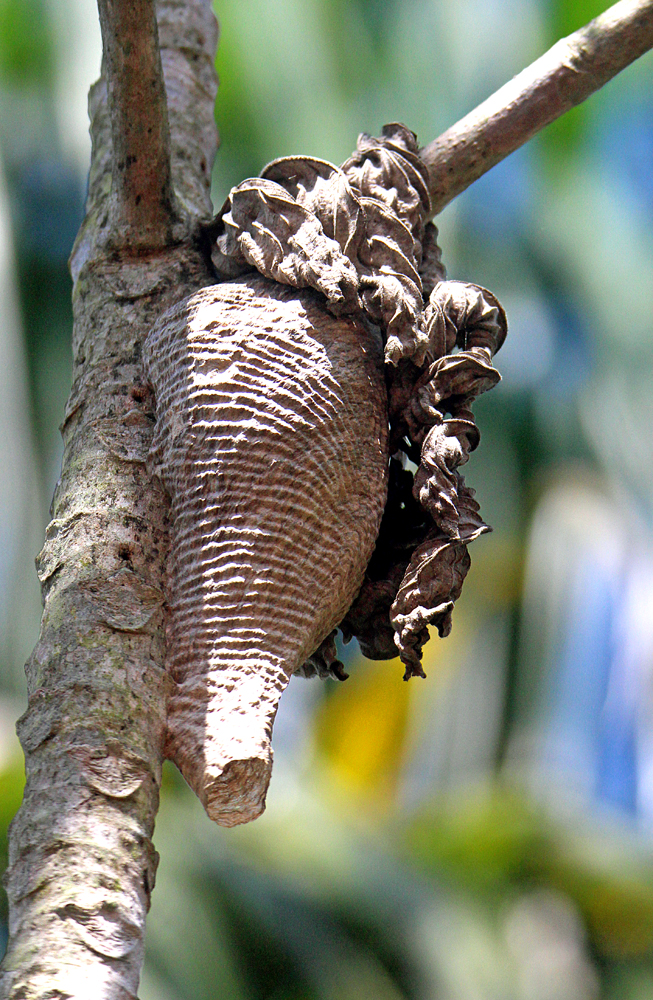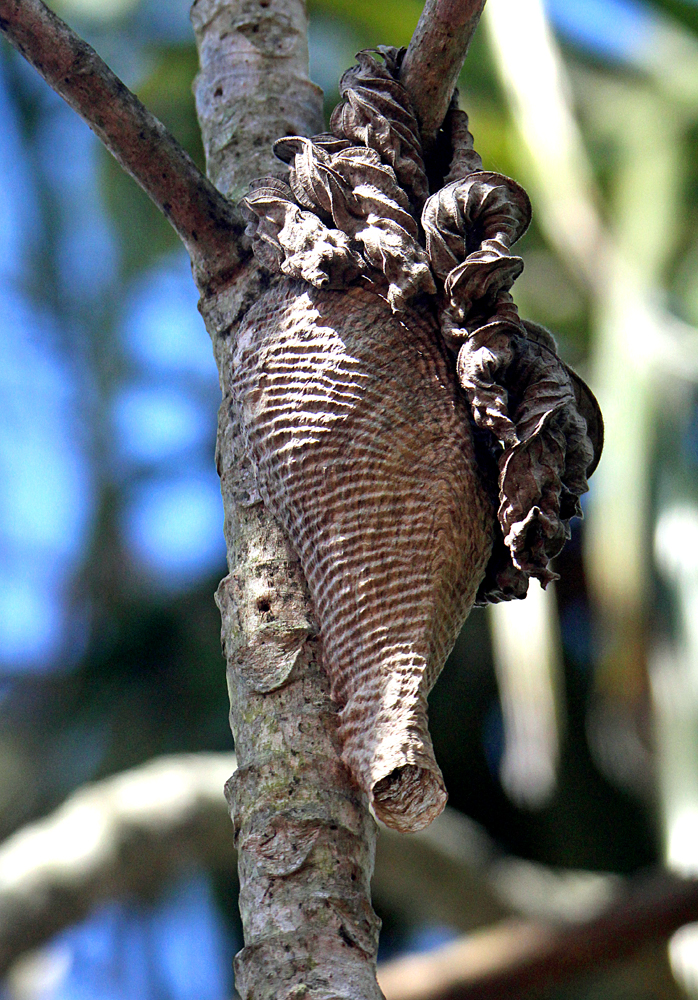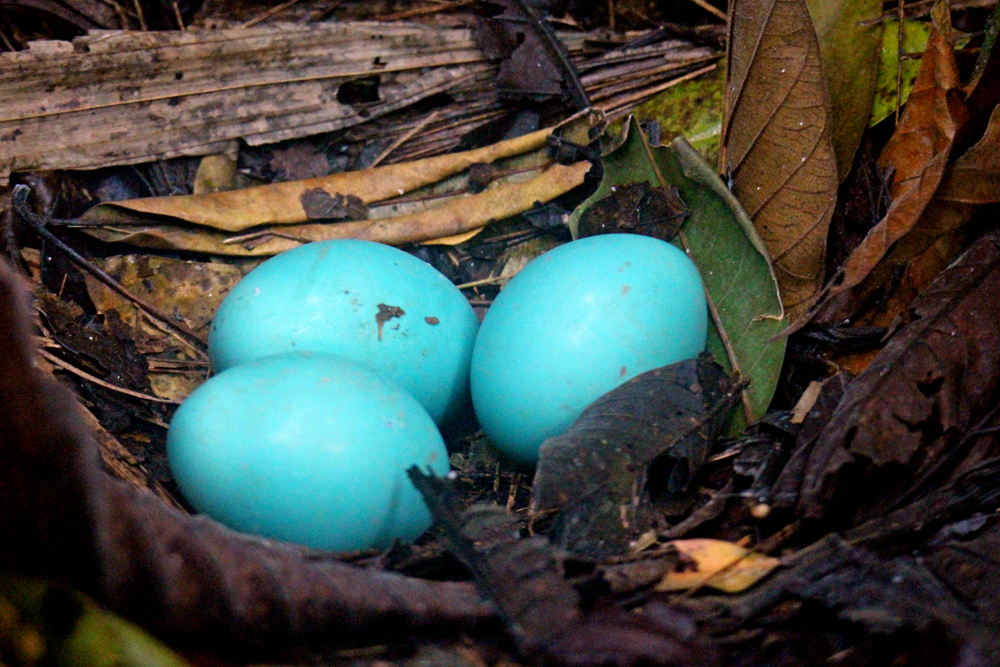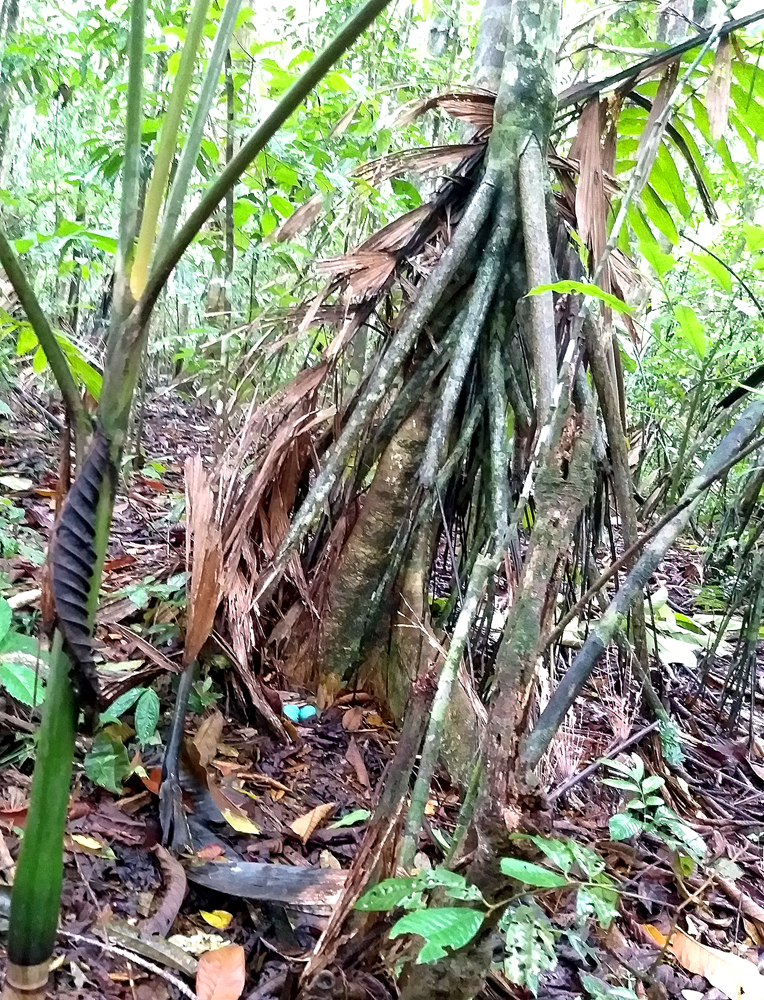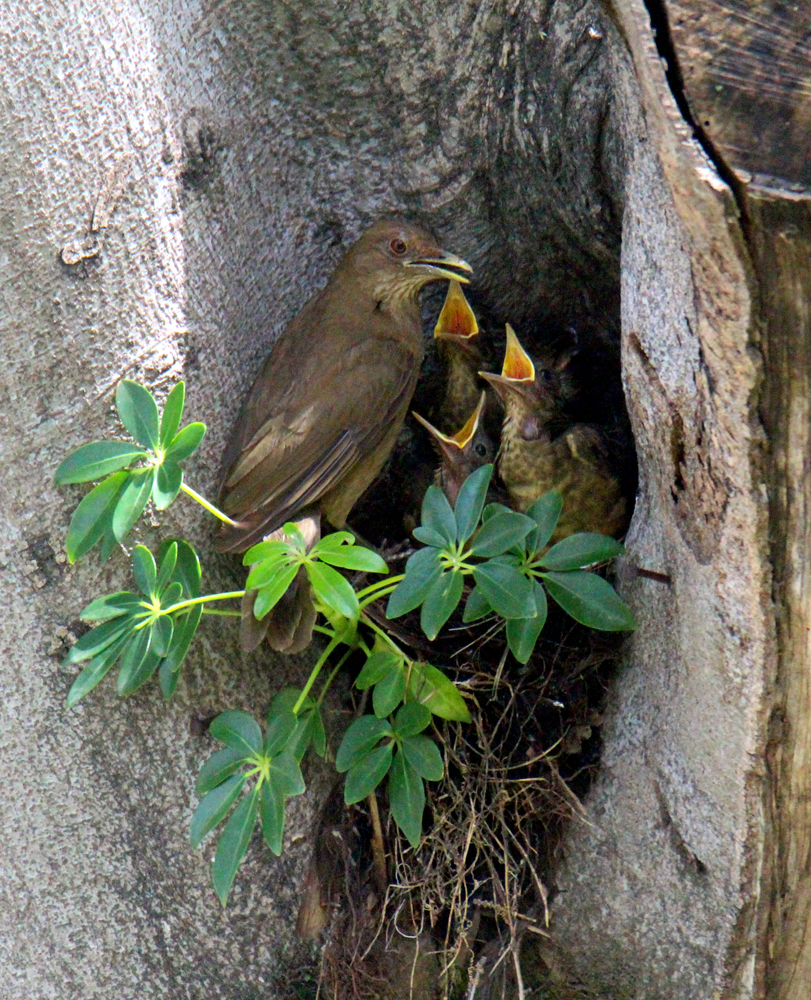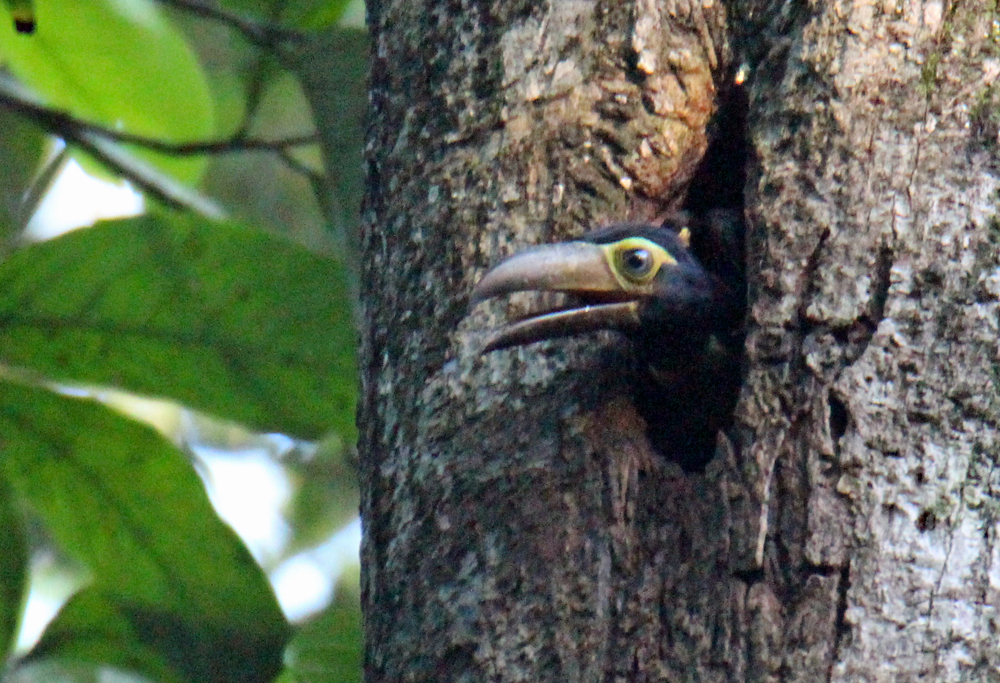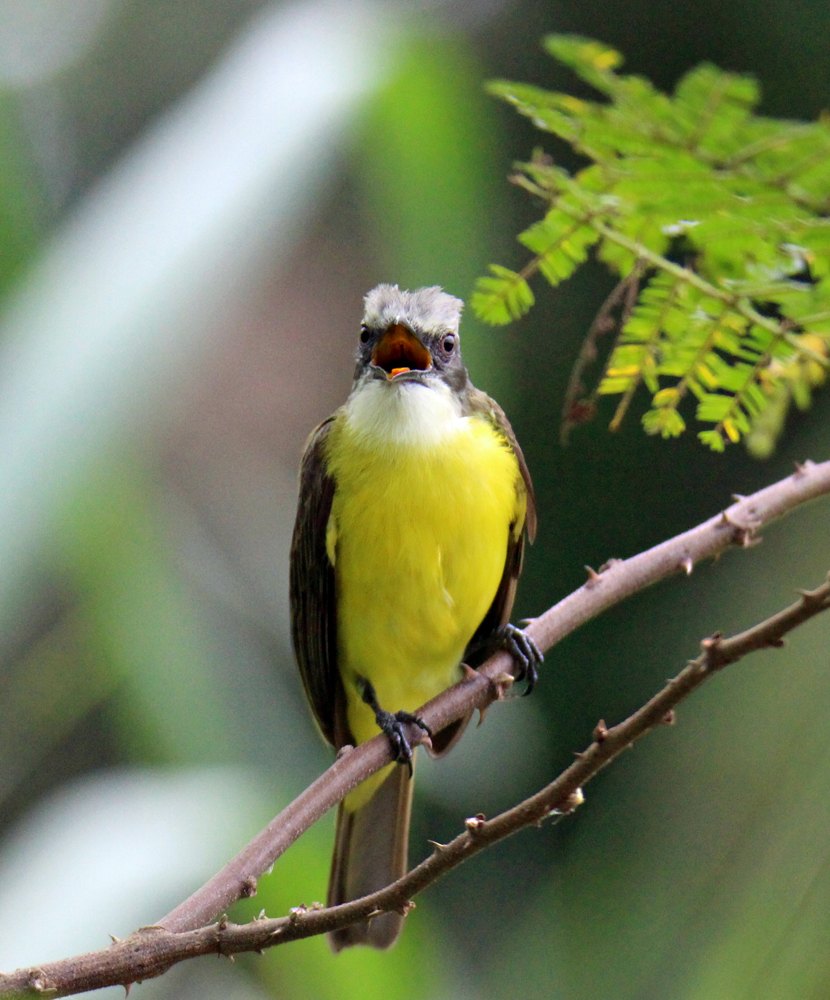At least in this area, it is the time that most of the birds are nesting, meaning a different kind of bird activity. The feature shot at top is of a Yellow-throated Toucan coming out of her nest with a berry or seed in her beak. Below you can see a shot of how small the hole is that both the male and female squeeze through. I guess their beak determines the size of the whole, usually a remade or enlarged woodpecker hole. 🙂
And in the spirit of nesting season, there’s also a shot of an unidentified bird on her nest and a hummingbird nest. All this reproduction activity is an important part of the ecology of the rainforest that seems to be coming at the beginning of the rainy season.
